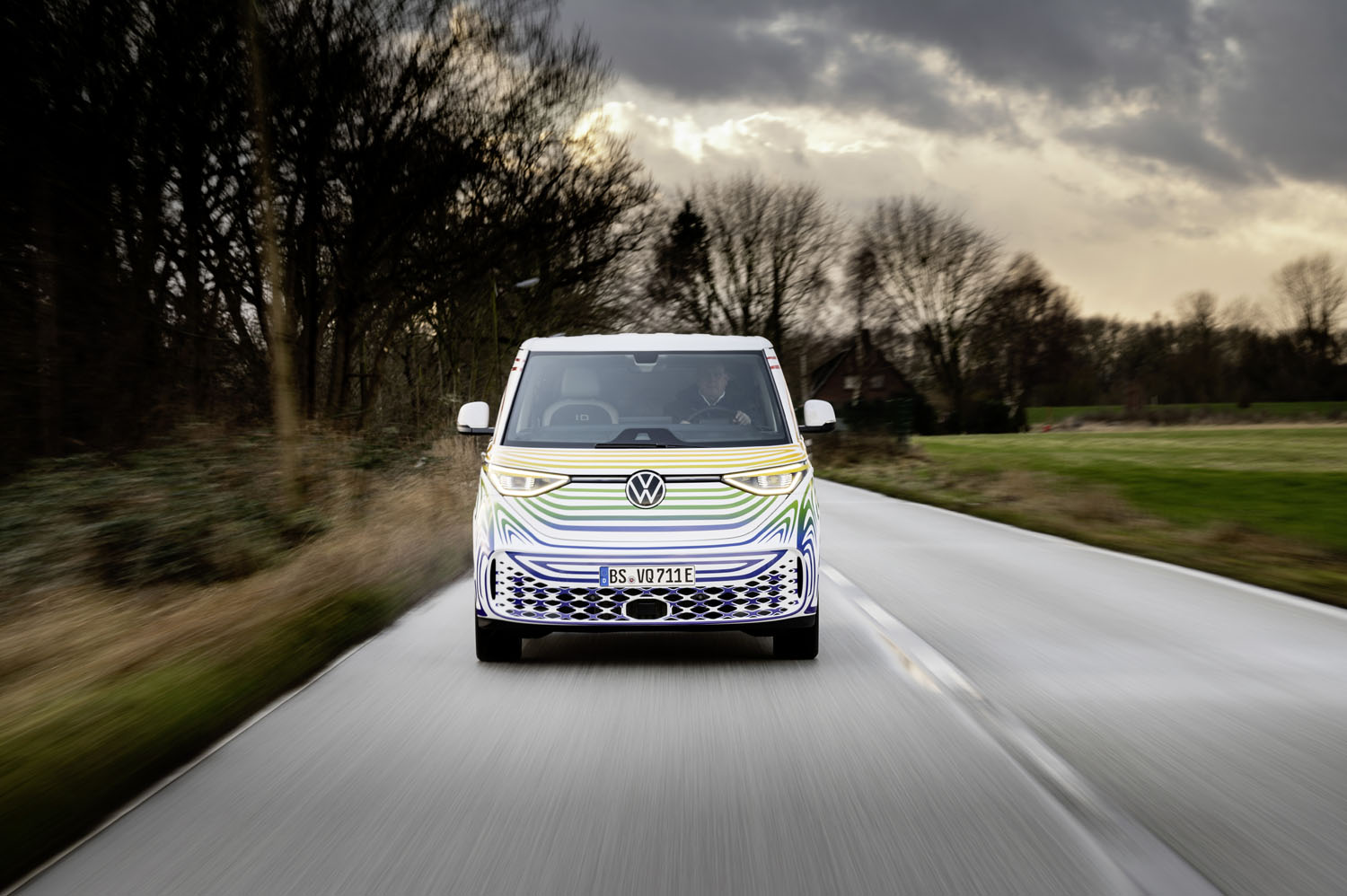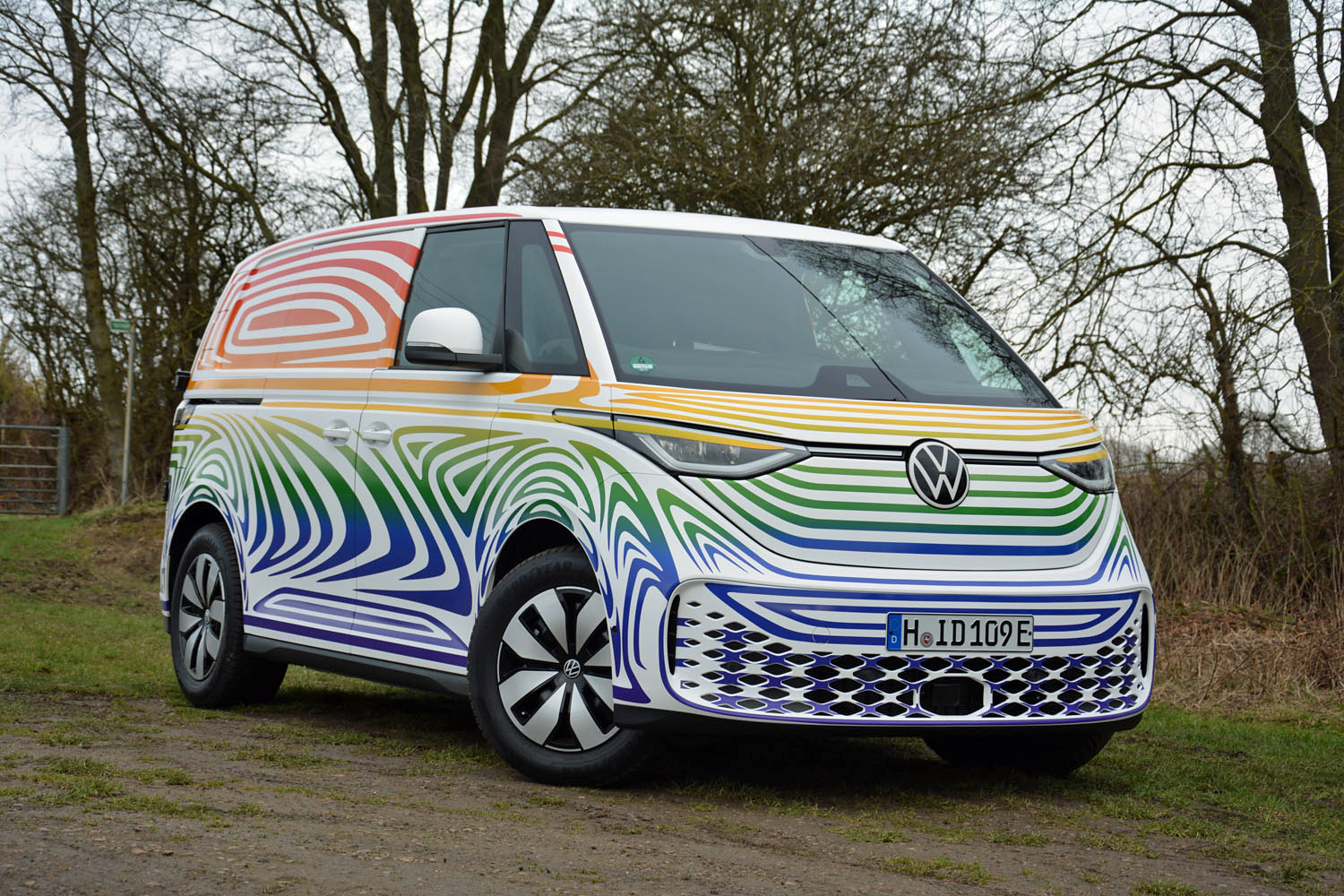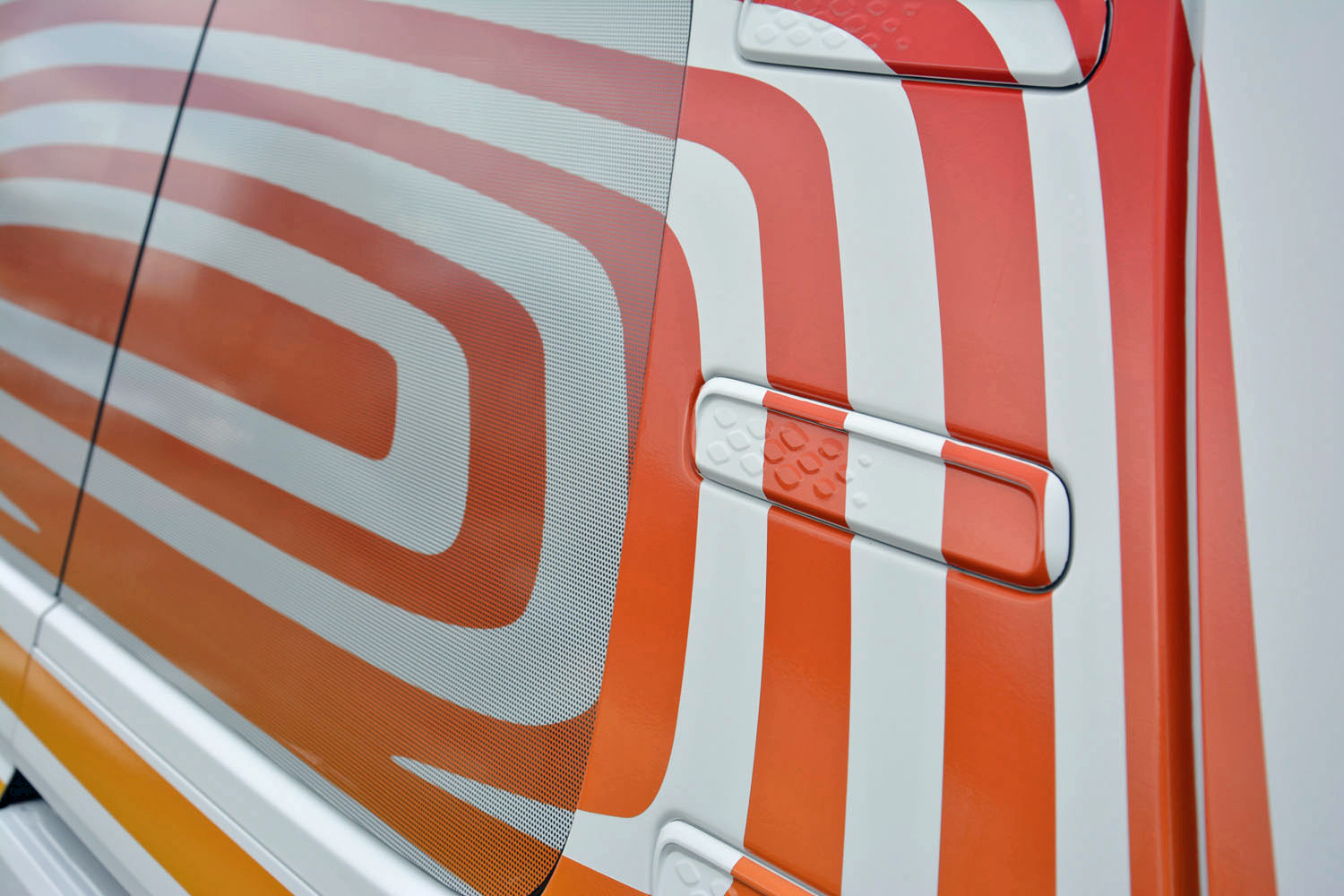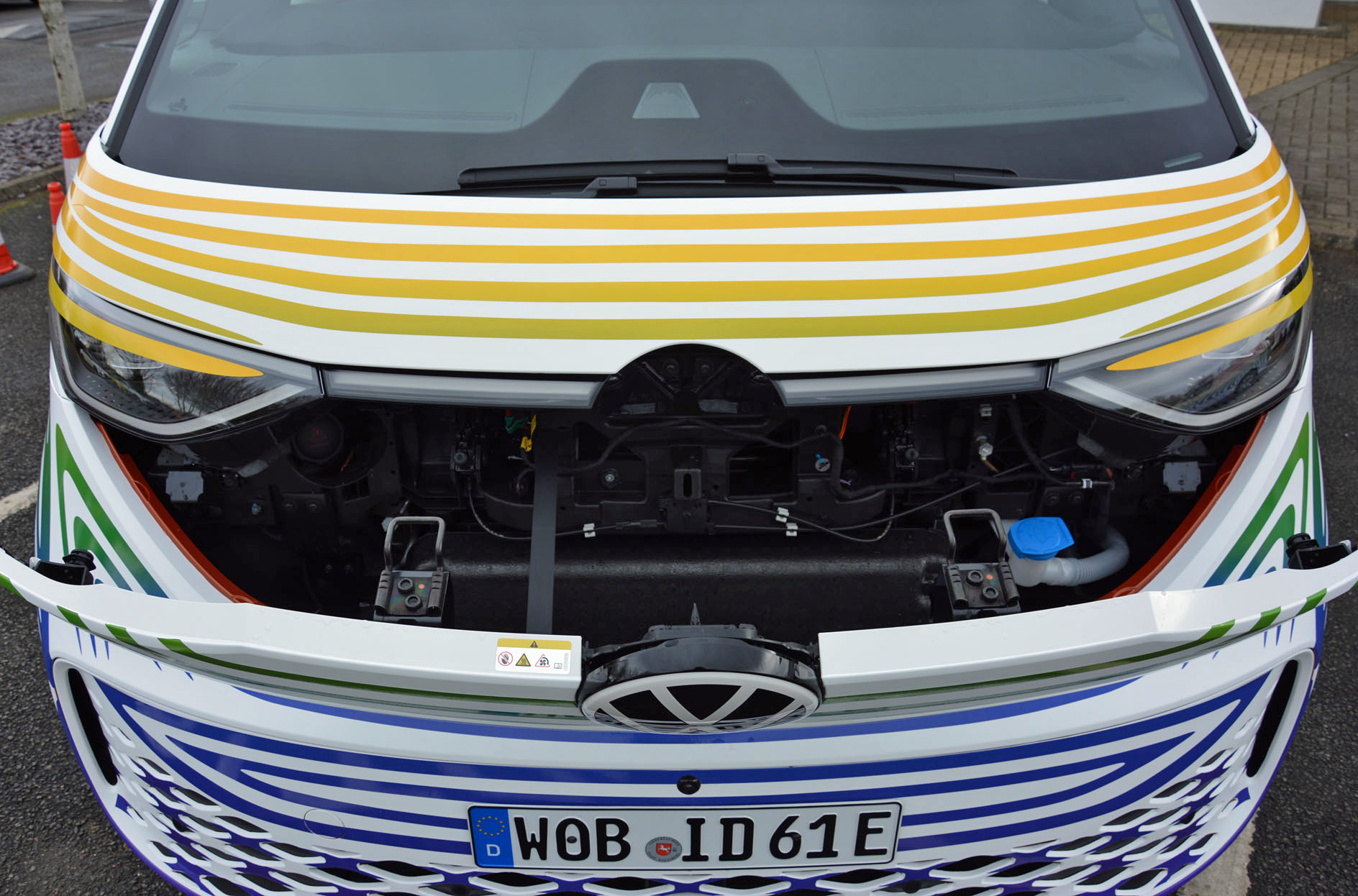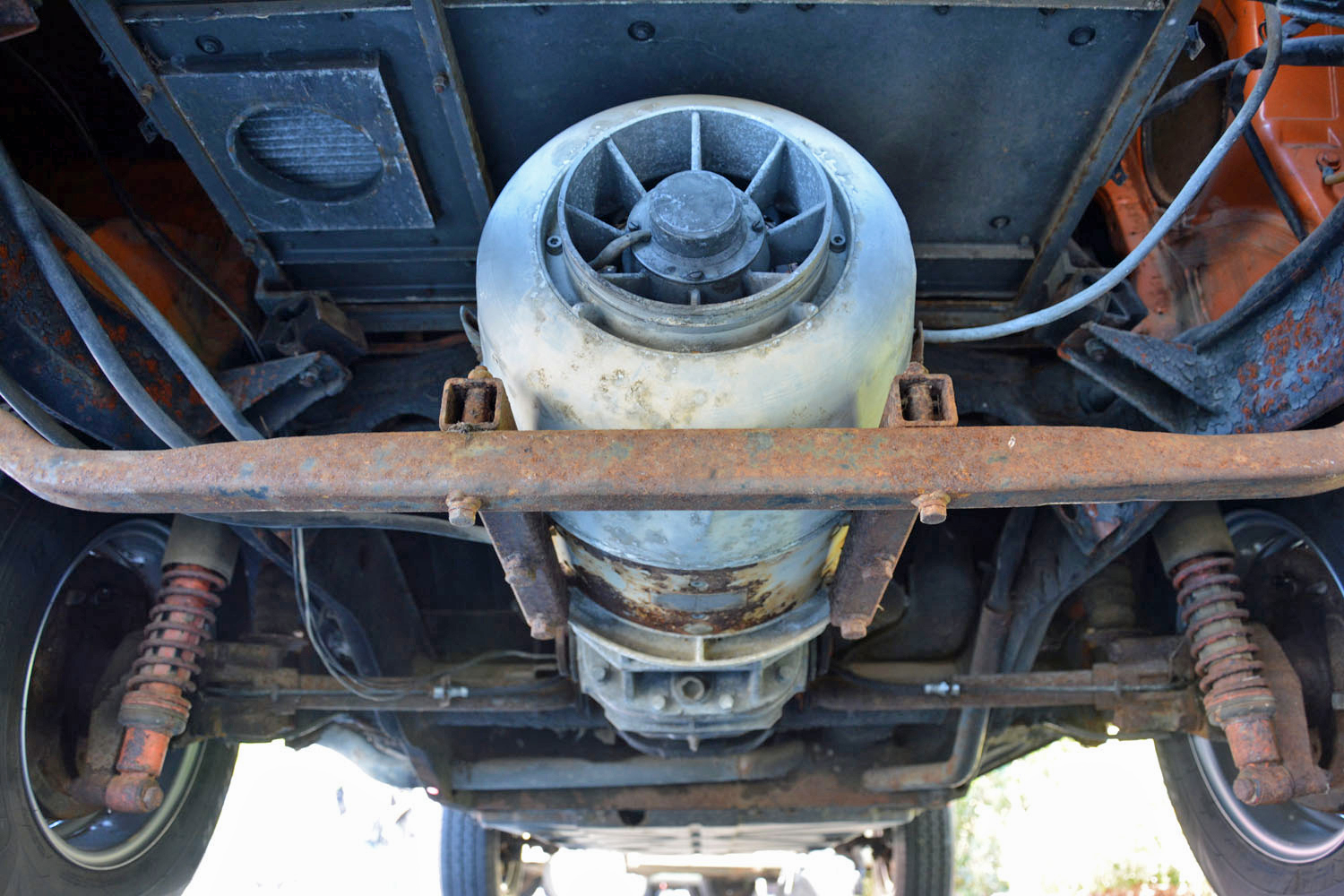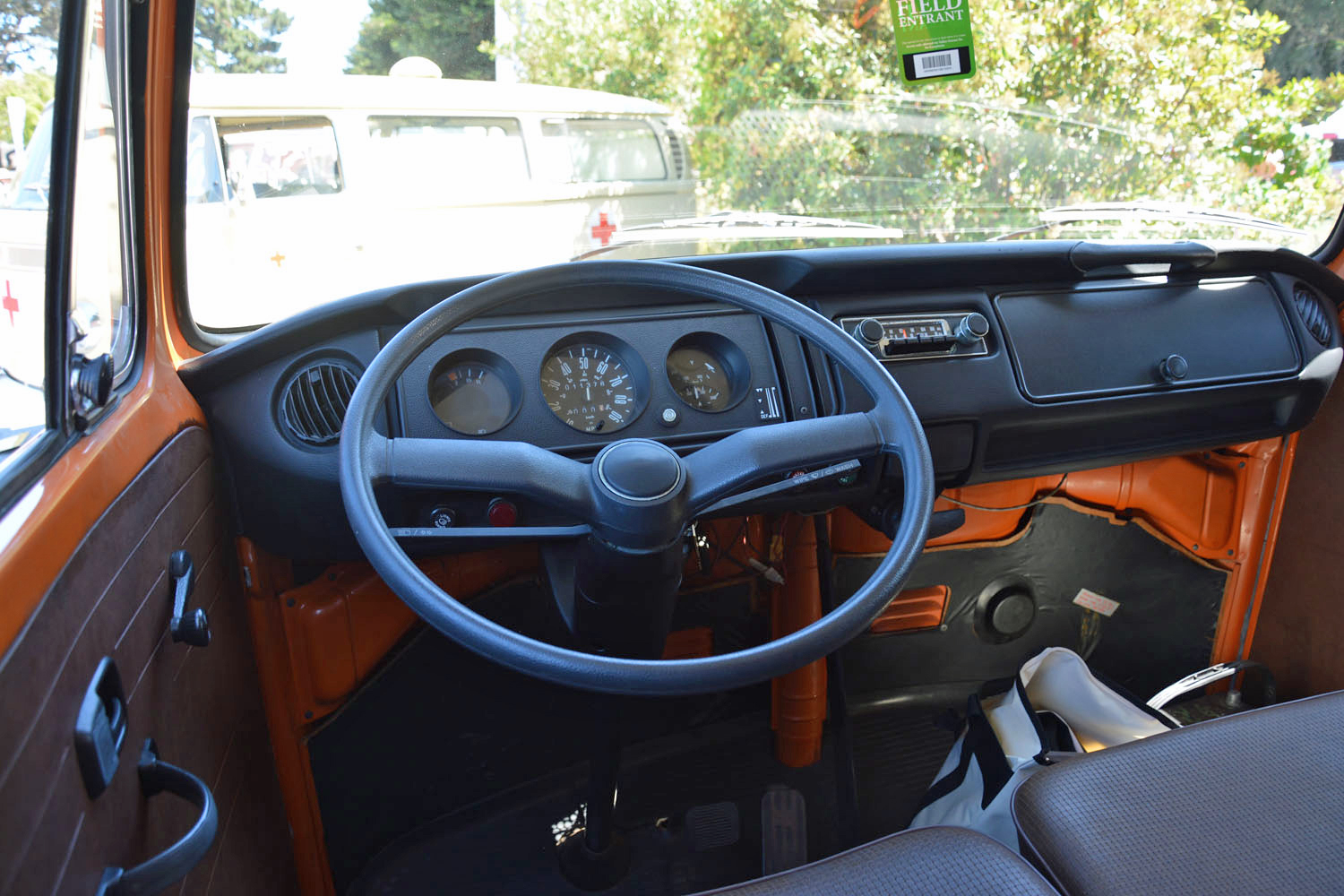This is it — this is the EV that we’ve been waiting for. It’s the production version of the Volkswagen ID.Buzz concept, which is called ID. Buzz (mind the gap, as the Brits say), and it’s a modern spin on the emblematic, rear-engined Bus that zig-zagged across America for decades. This 21st-century hippie van hasn’t been fully unveiled yet, we won’t see it without the psychedelic camouflage until March 9, but I traveled to England to spend time behind the wheel of a pre-production model and get a better idea of whether the wait and the hype were worth it.
Years in the making
Volkswagen presented the ID.Buzz as a concept at the 2017 edition of the Detroit auto show. Futuristic-looking and decked out with LEDs, the retro-inspired van was part of an ongoing series of design studies created to preview the different directions that the Wolfsburg-based firm can take its modular MEB platform in. Among others, we saw the 2016 ID. concept, which became the ID.3 hatchback, the ID.Buggy that I drove in California, and, more recently, the ID.Life built to preview an electric, city-friendly crossover tentatively due out in 2025.
On a secondary level, the ID.Buzz also stood out as the latest in a long line of concept cars that explored what a modern-day version of the Bus (which was officially called Type 2) could look like. Stroll through Volkswagen’s archives department and you’ll encounter concepts like the Microbus (2001), the Bulli (2011), and the BUDD-e (2016). None of these vans reached production; the Buzz is the exception to the rule.
What took so long? Volkswagen told me that its engineers had to clear several hurdles before they could make a modern-day Bus a reality. The term “iconic” gets thrown a lot in the automotive industry but the old Bus truly deserves it; it is, along with the original Beetle and the original Mini, one of the most recognizable cars ever built. Funneling this DNA into a van that can be mass-produced and sold globally in 2022 was easier said than done, and Volkswagen took its time because it couldn’t afford to screw up. That meant making the front end as flat as possible, like the original model’s, without ending up with a configuration in which the folks sitting in the front are the crumple zone.
Peeking through the camouflage reveals some of the changes that designers have made to the Buzz since 2017. Most of the LEDs have been erased from the front end, predictably, and the bottom part of the front bumper has a new, more production-friendly look to it. Walk around to the side and you’ll see door handles, which the design study didn’t have, while the back end gets bigger lights connected by a light bar. The overall proportions haven’t changed, however. The Buzz remains big, boxy, and a tribute to the Type 2 without being full-on retro. It’s not as heritage-laced as, say, the New Beetle that entered production in 1997, but it’s also a lot more interesting to look at than your average van.
Inside, well … that’s off-limits for the time being. You wouldn’t be wide of the mark if you assumed that the Buzz packs at least the same amount of technology as Volkswagen’s other ID-badged electric cars, like the ID.4 crossover, and that its interior is at least as spacious as its box-like proportions suggest. Driving aids are part of the package as well, and the Buzz will be used to test autonomous technology in Hamburg, Germany, starting in 2025. And, there’s no frunk: The only thing of interest behind the nose is the windshield washer fluid filler tube. Volkswagen told me that it could have easily added one, but it chose not to in order to keep the front overhang as short as possible.
Van life meets city life
Here’s where we reach a fork in the road. I drove two versions of the ID. Buzz, a passenger-carrying five-seater van and a cargo-hauling panel van, and neither are coming to the United States. We’ll get a long-wheelbase model that will look just like the European model save for the bigger footprint and that hasn’t been unveiled yet. It should offer three rows of seats, though official details remain few and far between.
With that said, the standard-sized Buzz measures 185.5 inches long, 76.3 inches tall, and 78.1 inches wide. For context, it’s about as long as a Tiguan but 10 inches taller and approximately five inches wider. Its weight hasn’t been published yet. Power comes from a rear-mounted motor that draws electricity from an 82-kilowatt-hour lithium-ion battery pack to zap the rear wheels via 201 horsepower and 229 pound-feet of torque. Range? Volkswagen says that it should be “similar to the ID. models with the same battery pack,” or around 250 miles. Bi-directional charging will be available, so the van will be able to store juice from solar panels during the day and feed it back to your house.
From behind the wheel, the Buzz feels unlike any van I’ve ever driven — including the original Bus, which I owned (and loved!) as a student 15 years ago. It’s interesting because, on one hand, you know you’re in a van. It’s spacious, almost cavernous, in a way that even the biggest SUVs on the market could only dream of. And yet, it’s stunningly easy to drive. It’s quick off the line thanks to the motor’s instant torque, it’s silent and linear like nearly all electric cars, and one of the most unexpected features is that it turns like a small hatchback. There’s no engine between the front wheels, so Volkswagen managed to dial in a 35-foot turning radius; that’s on par with an eighth-generation Golf’s. Turn the steering wheel and it keeps going, and going … and going. This is a feature that takes the hassle out of driving a van in tight urban areas.
It’s also not as top-heavy as a lot of vans on the market. That’s due to the battery pack: It’s the heaviest part of the car (it weighs over 1,000 pounds in the ID.4) and it’s mounted directly below the passenger compartment so it keeps the center of gravity low. These characteristics make the Buzz fun. Not in a Miata-on-a-twisty-road sort of way, but in the sense that it’s enjoyable because it feels more nimble than it is. The brake energy recuperation system makes one-pedal driving possible, though it can be turned off using a switch near the steering wheel if you’d rather use the brake pedal. It’s either on or off; there’s no intermediate setting for drivers who want just a little bit of regeneration.
Towing and payload check in at around 2,200 pounds and 1,289 pounds, respectively, which admittedly isn’t much. Outfitting one as a camper or pulling a small trailer shouldn’t be a problem, but don’t expect to tow your old Beetle to the next swap meet with a Buzz.
Here comes your van
Volkswagen will begin building the people- and cargo-carrying variants of the ID. Buzz in Hanover, Germany, during the first half of 2022, and the first units are scheduled to reach dealers across Europe before the end of the year. Pricing has not been released yet. The long-wheelbase model that will be sold in the United States will be unveiled soon, and expect to see it in showrooms in 2024 at the latest. Will it be a volume model? Not by any stretch of the imagination. But, if there’s one car that can make America fall in love with vans again, this is it.
Guessing that different battery sizes and dual-motor all-wheel-drive will be made available at some point in the production run wouldn’t be taking us too far in the hopscotch game of speculation. This is a modular platform, after all, and taking advantage of it makes sense from an economics standpoint. More space between the wheels means more space for battery cells, but nothing has been announced as of writing.
Haven’t we been here before?
In our market, the original Bus was exclusively available with an air-cooled flat-four engine. And yet, electrification was already on Volkswagen’s mind in the 1970s, due largely to the rising cost of oil. Several battery-powered prototypes were built, and 10 of them were purchased by the Electric Power Research Institute and assigned to the Tennessee Valley Authority for testing in various conditions. Shown below, these experimental vans looked just like the regular-production model with the exception of powertrain-specific graphics, cooling vents added to the sliding doors to keep the battery’s temperature in check, and a charging port installed next to the driver-side rear light.
Looking at the specifications sheet reveals how far electric technology has come in the past decades. Power for the electric Bus came from 72 lead-acid batteries stuffed under a raised floor and a motor bolted to a stock four-speed manual transmission locked in second gear. Drivers had 23 horsepower under their right foot, which was enough for a top speed of 43 mph. Driving range checked in at about 25 miles in ideal conditions, though the prototypes were fitted with a primitive brake energy recuperation system and the battery pack could be swapped out.

